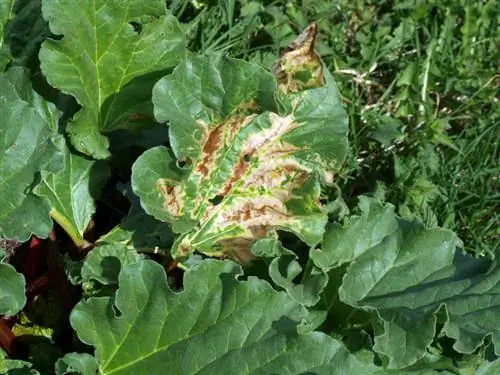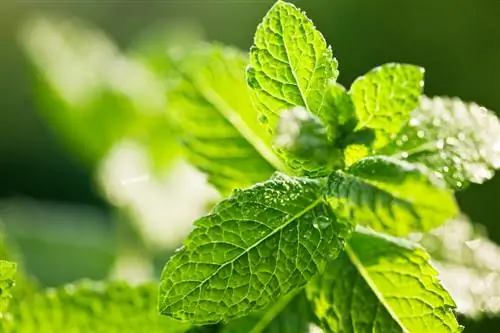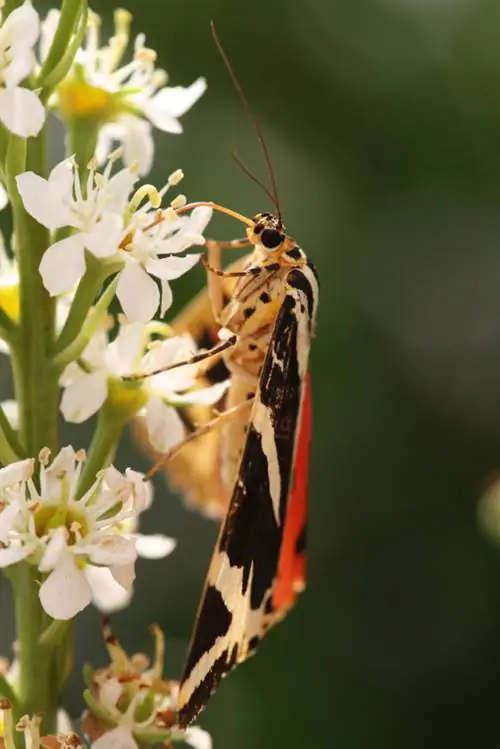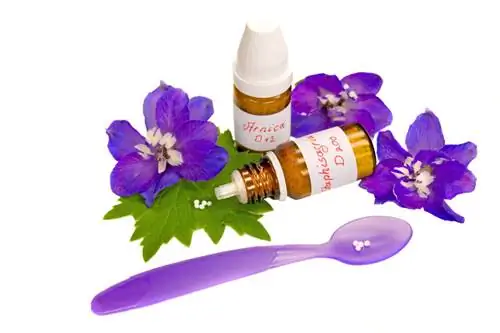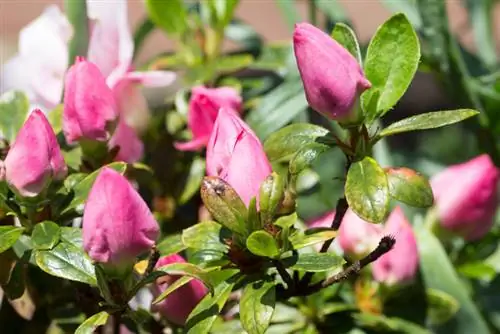- Author admin [email protected].
- Public 2023-12-16 16:46.
- Last modified 2025-01-23 11:19.
Despite the long cultivation period, rhubarb is rarely affected by diseases. Rhubarb mosaic disease poses a particularly serious threat. Diagnosis and possible treatment are explained in the following lines.

What diseases can affect rhubarb and how can they be treated?
The most common rhubarb diseases are rhubarb mosaic disease and leaf spot. Avoid the spread of viruses through certified planting material and regular pest control. In the event of an infestation, affected plants must be removed immediately and the break in cultivation extended.
Assign the symptoms correctly
There are usually several viruses that cause mosaic disease on rhubarb. The content of toxic oxalic acid in the leaves does not bother the pathogens much. The symptoms are differentiated accordingly:
- in the spring countless spots in light or dark green shades on the leaves
- brown spots along the edges of the leaves
- yellowish, mosaic-like discolorations
- round, light brown necrosis with slight bulges
The viruses are introduced in a variety of ways. Young plants obtained through division by hobby gardener friends often contain long-lasting viruses. Aphids and other sucking pests are also considered vectors. Direct combat is not yet known.
Indirect control promises success
If the described symptoms of rhubarb mosaic disease occur, the only solution is immediate clearing. To prevent this from happening in the first place, transmission of the viruses should be prevented. Experts recommend taking the following measures:
- Do not plant rhubarb in the eaves area under fruit trees
- check daily for aphids and deal with them immediately if infested
- Use only certified seedlings that have been tested to be free of viruses
If rhubarb mosaic disease still spreads in your garden, remove all affected plants from the bed. The cultivation break is then extended from 5 to 7 years before you can plant rhubarb there again.
Leaf spots rarely limit harvest
The common leaf spot disease (Ascochyta rhei) initially resembles mosaic disease. The spots on the leaves have a brown center surrounded by a red or yellow border. As the process progresses, the brown dots fall out of the leaf tissue.
If the affected leaves are cut out in time, the stalks can still be harvested. However, if you fail to clean the diseased parts of the rhubarb, you risk the plant dying completely.
Tips & Tricks
Infection by fungal spores or viruses is an ever-present danger in hobby gardening. As a comprehensive tonic to prevent all kinds of diseases, liverwort extract is making a name for itself. If rhubarb is sprayed regularly from a young age, pathogens do not even settle. Even voracious snails avoid the plants.

